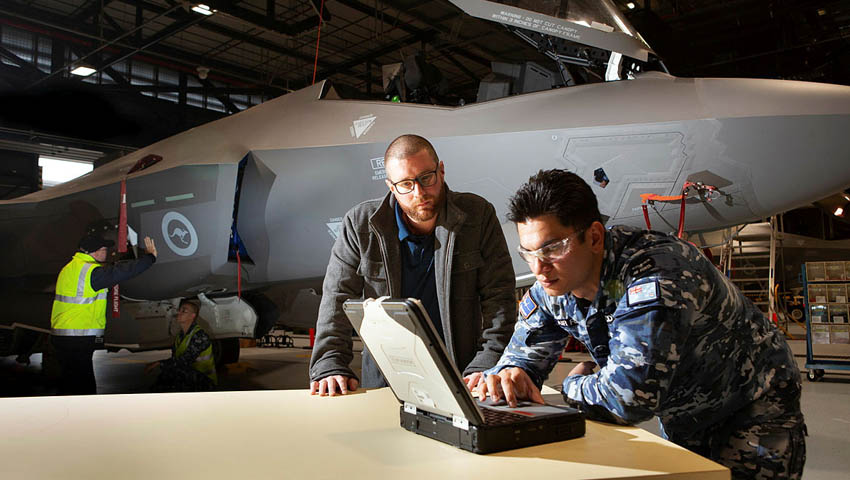The Royal Australian Air Force has formally accepted its 30th F-35A Joint Strike Fighter from Lockheed Martin, as the nation’s fifth-generation fighter fleet and capability continues to grow.
Significant work is undertaken by Lockheed Martin before Australia can formally accept each jet, with pre-acceptance testing involving multiple checks on the production line at Lockheed Martin’s facility in Texas, as well as several flight tests to ensure each F-35A is up to the tasks the RAAF requires.
F-35A Air Vehicle Lead Squadron Leader Brook Porter is about to wrap up his three-year posting to Joint Strike Fighter Branch in Capability Acquisition and Sustainment Group, where he has been involved in accepting 28 F-35A aircraft.
SQNLDR Porter explained the in-depth acceptance process ensured each F-35A was ready for Australian defence registration and operational use.
“Working with local and international stakeholders, the team has also been integral to ferrying the majority of these aircraft to Australia from the US. It’s rewarding to be part of the team establishing Australia’s future air-combat capability. It’s much bigger than simply delivering an aircraft,” he said.
Director General Joint Strike Fighter Branch Air Commodore Damien Keddie said accepting and ferrying each of Australia’s jets was the epitome of international collaboration.
“I am proud of the way the team has come together, particularly during the global pandemic, to find innovative solutions to issues that may otherwise have prevented us reaching 30 aircraft in the fleet,” AIRCDRE Keddie said.
This announcement comes days following the successful completion of Exercise Lightning Storm, which saw a spectrum of RAAF assets combined around the nation, ranging from the E-7A Wedgetail Airborne Early Warning & Control (AEWC), the F/A-18A Hornets, F/A-18E/F Super Hornets, KC-30A Tankers and Hawk Lead-in fighters, all combine with the F-35.
Commander Air Combat Group (ACG), Air Commodore Tim Alsop, shed some light on the training program and the performance of the F-35, as the RAAF put its new wonder jet through its paces.
"To say that the F-35 performed wonderfully is an understatement, it truly is a generational and transformational capability for the Royal Australian Air Force. Throughout the exercise, JSF really came into its own," he said.
AIRCDRE Alsop explained, "The exercise was designed from the ground up to validate the deployability and interoperability of the F-35 – this emphasised 'deploying' the F-35 and its support infrastructure 'away from barracks', which we were able to do in an 'expeditionary' manner despite not actually leaving the base."
The Lockheed Martin F-35 Joint Strike Fighter is billed as a catalyst for the fifth-generation revolution, changing the face and capability of the Royal Australian Air Force and the wider Australian Defence Force.
For the RAAF, the F-35A's combination of full-spectrum low-observable stealth coatings and materials, advanced radar-dispersing shaping, network-centric sensor and communications suites – combined with a lethal strike capability – means the aircraft will be the ultimate force multiplying, air-combat platform.
More than 340 F-35s are operating today with partner nations, more than 700 pilots and 6,500 maintainers have been trained, and the F-35 fleet has surpassed more than 170,000 cumulative flight hours.
Over the coming years, Australia will purchase 72 of the advanced fifth-generation fighter aircraft as part of the $17 billion AIR 6000 Phase 2A/B program – which is aimed at replacing the ageing F/A-18A/B Classic Hornets that have been in service with the RAAF since 1985.






